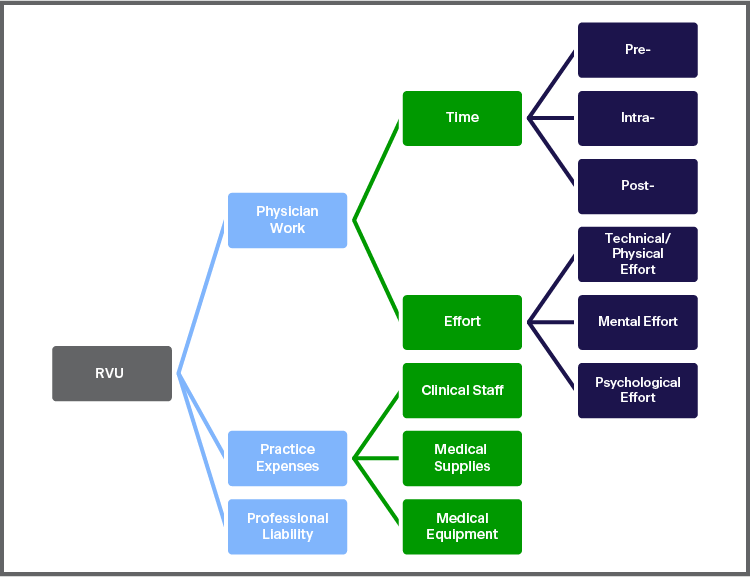Jacob Ormsby, MD, MBA
Appreciating the Complexity of RVUs
 Do you understand relative value units (RVUs)? It’s not simply a magic number used to measure your productivity. Instead, it’s a well-thought-out number specifically given to procedures performed by physicians or similar healthcare professionals. I did not actually appreciate the complexity of the RVU until serving as an alternate advisor to the American Medical Association/Specialty Society Relative Value Scale Update Committee (otherwise known as RUC). In this article I hope to give you a little insight into the components of devising that number.
Do you understand relative value units (RVUs)? It’s not simply a magic number used to measure your productivity. Instead, it’s a well-thought-out number specifically given to procedures performed by physicians or similar healthcare professionals. I did not actually appreciate the complexity of the RVU until serving as an alternate advisor to the American Medical Association/Specialty Society Relative Value Scale Update Committee (otherwise known as RUC). In this article I hope to give you a little insight into the components of devising that number.
I think it’s easiest to think of the RVU as the finished product of building blocks. Essentially, the house is formed by putting together the individual pieces. To start, we break the RVU into three main components: physician work, practice expense and liability insurance. Physician work, which can be broken into two parts — time and effort — is the easiest to understand, and probably the one we think of most.
Time itself can be broken into three parts: pre-time, intra-time and post-time. Effort can be broken into three parts: technical/physical effort, mental effort and psychological stress. The second main building block of the RVU, practice expense, can be broken into clinical staff, medical supplies and medical equipment. Given all these breakdowns, it can be hard to keep track. Below is a visual representation of all the components:

To further understand this, it may be best to present a case example. Let’s think about percutaneous vertebral augmentation in the lumbar spine. Starting with time, pre-time would be obtaining consent from the patient along with reviewing preprocedural imaging to prep the case. Intra-time would be driving the needle into vertebral body and delivering the cement. Post-time would include seeing the patient in recovery and a possible post-op visit.
Actual procedure ability would be categorized as technical effort. Mental effort would be thinking through the variables presented during the case. Psychological stress includes things like making sure the needle isn’t too medial to potentially injure the cord and making sure the cement doesn’t miss its target.
Continuing with vertebral augmentation, let’s consider the practice expense component of its RVU. Clinical staff should include both nurses and IR technologists. For medical supplies, many components would fit, such as the cement, needles, sterile gowns and lidocaine. Finally, medical equipment would include the fluoroscopy machine used for the procedure. Note: Practice expense is based on the direct procedure cost; this means you cannot charge for new equipment each time.
Hopefully, this brief article gives you an appreciation for the true complexity of the RVU. The next time someone talks about RVUs, you will have a better understanding of the reimbursement process.